Are You Writing Too Much Content? How to Determine Your Ideal Content Length
by Chris Dayley • November 18, 2016
Content length is a funny thing. If your content is too long, your audience will bail. If it’s too short, you can come off as shallow or meaningless.
SEO experts have debated content length for years, but these discussions have always orbited around optimizing for keywords and search engine algorithms.
But what about your users?
Google is shifting their algorithms to optimize for user experience. In fact, according to Moz’s Search Engine Ranking Factors 2015 report, 4 of the top 10 non-keyword ranking factors Google takes into account are user experience-related:
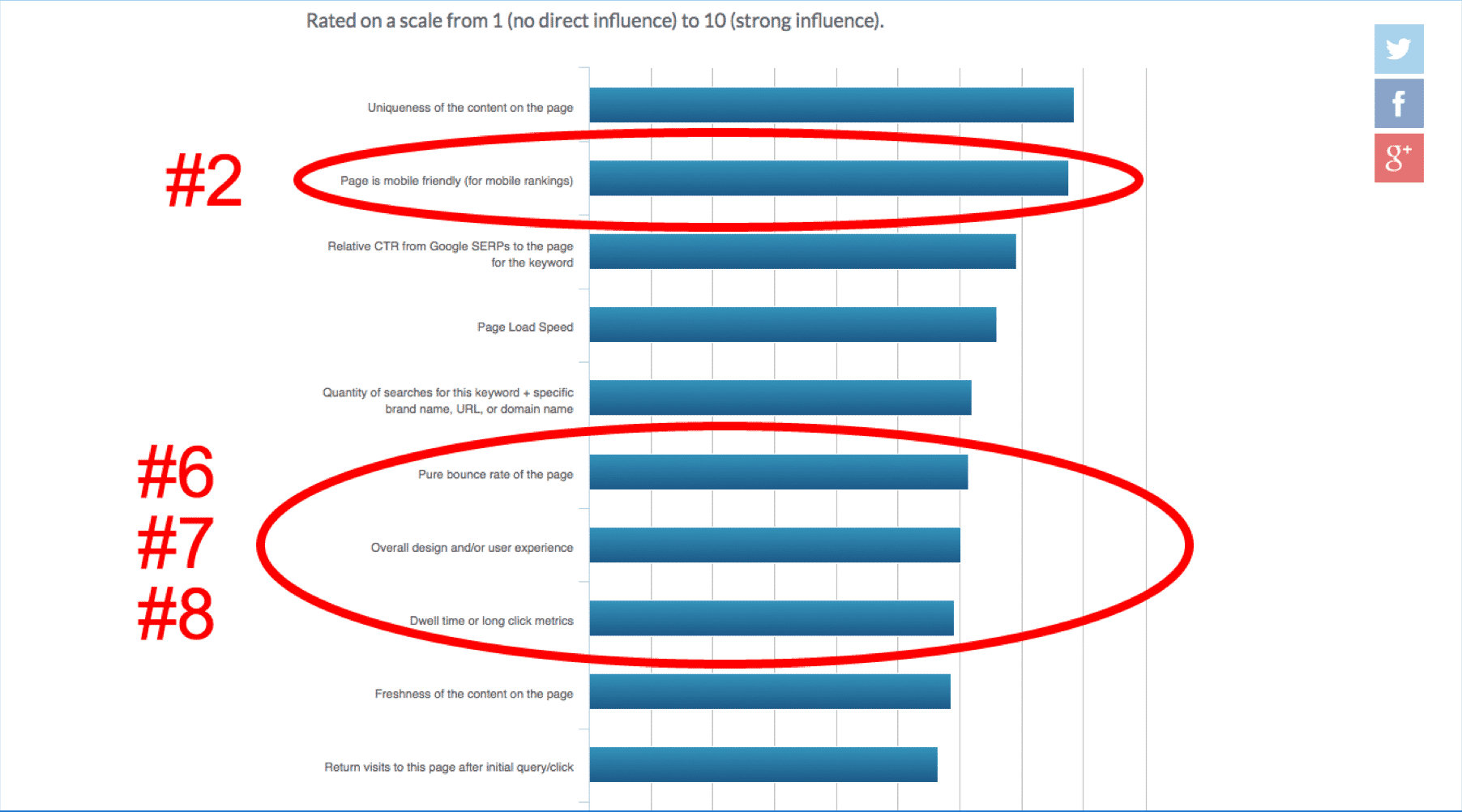
So, even if your content is optimized for Google’s current algorithm, if your content isn’t delivering a great user experience, your pages and posts may soon start falling through the ranks.
With all that in mind, the question of content length is becoming increasingly important.
How much content does your audience want to read? Does your audience want more, less or the same amount of content on desktop and mobile? What amount of content yields the best results for your business?
Fortunately, those questions aren’t as difficult to answer as you (or your SEO expert) might think.
Questioning Content
For a long time, it seems like most companies have put an emphasis on generating longer and longer content.
But is this the right move?
If I’m being honest with myself, it’s been a very long time since I’ve read all the content on a webpage, even for a company or a product I’m interested in. And I’m not alone. According to Chartbeat, most people barely make it halfway through a blog post:
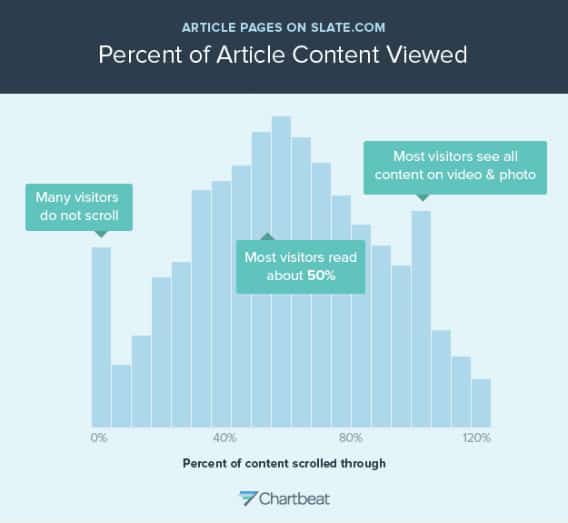
Thanks to Google’s preference for long content, however, the internet is filled with lengthy posts and pages, most of which seems to drone on far longer than is actually helpful.
When I see content like this (I broke the page up and put the pieces side-by-side so you wouldn’t have to scroll through the whole thing—see what I did there?):
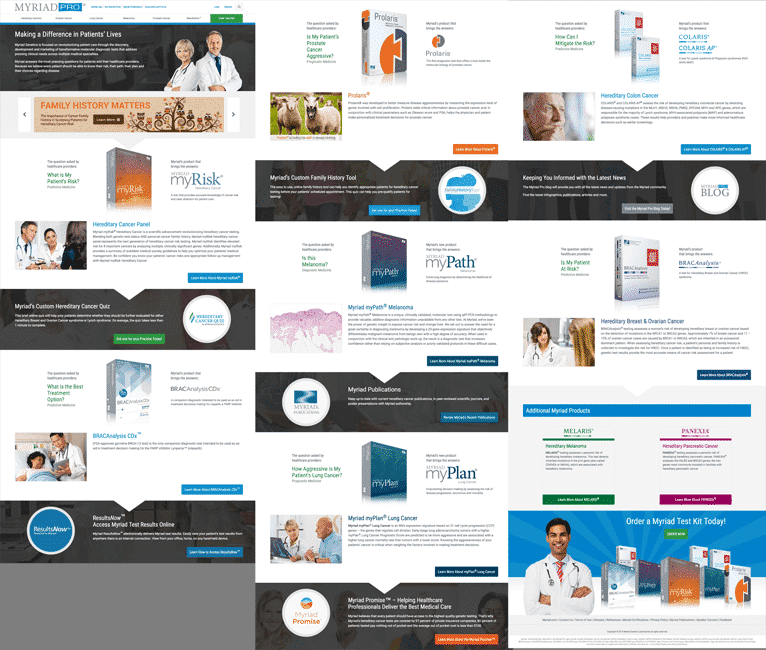
I often ask myself, Who is this content written for? Is this for me (the potential customer), the company (because they want everyone to know everything they have to say), or for the search engines (to get rankings)?”
I mean, as nice as this site is and as valuable as their content might be, who is actually going to read through this entire page?
Testing Content Length
This brings us to a fantastic test that I believe every company should run on their site to determine the content length your audience is looking for on both desktop and mobile experiences.
To show you how this works, let me show how I used this test to improve the user experience for a client of ours: OURrescue.
OURrescue is a fantastic organization dedicated to saving children from sex traffickers. OURrescue travels all over the world to find and save these children. However, to rescue these children, OURrescue needs donations.
As part of their ongoing effort to fund more rescues, OURrescue details reports on their “missions” in a series of (often heart-rending) blog posts. At the bottom of each blog post is a call-to-action asking for donations.
Like most online content, these article were typically well over 1,500 words and covered as many details as possible. The posts were performing decently well, but we wondered, could changing the length of their content increase donations?
To test this, we had the article author write a long, medium and short version of the article. Then, we ran each version of the article and used Hotjar to track how far down the page people scrolled, Google Analytics to track time on page and donations to track the financial results of each version of the article.
We tested desktop and mobile traffic separately and used Optimizely to split OURrescue’s traffic between the 3 different versions of the article.
Here’s what we found for desktop users:
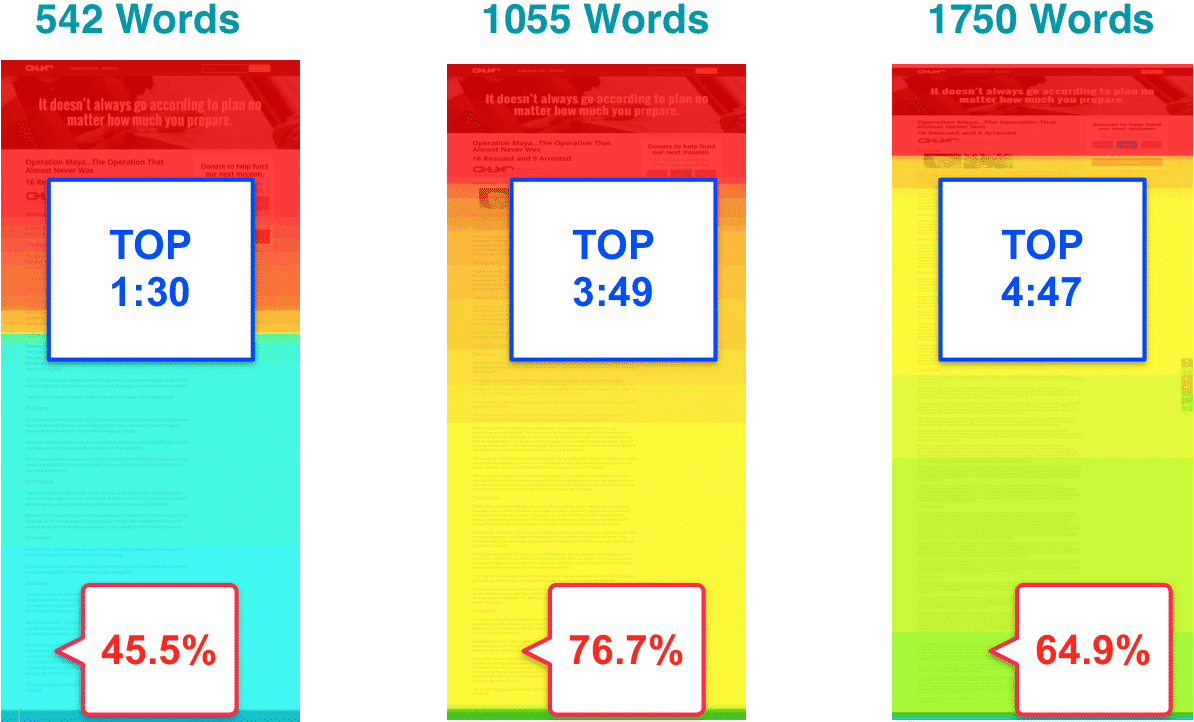
As you might expect, the longer the article, the longer our average time on page.
However, on the shortest version of the article, 54.5% of our audience left the page before finishing the article. 35.1% of our audience left before finishing the longest version of the article. Our best completion rate was actually with the mid-range version of the article.
Now let’s take a look at our mobile results:
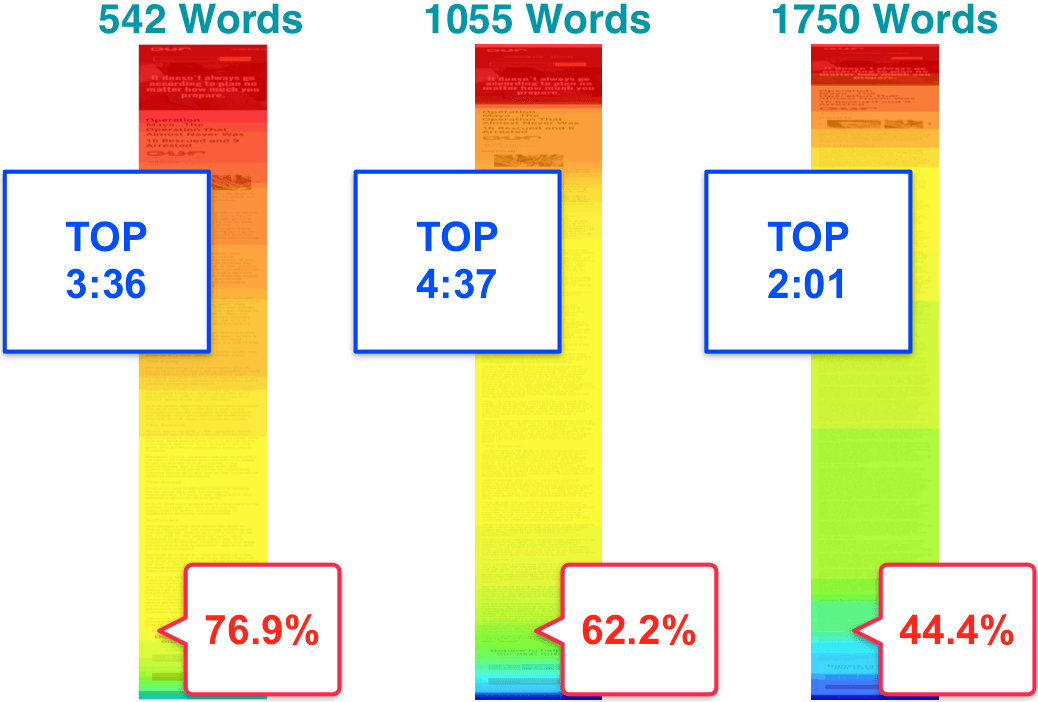
On mobile, things were very different. The longest version of the article actually had the shortest time on page (and the lowest completion rate) and while the medium version of the post still performed well, the shortest version had the highest completion rate.
So, for this particular client, longer hardly appeared to be better.
But what about donations? That was the true measure of the effectiveness of these articles, right?
Here’s the winners for donations:
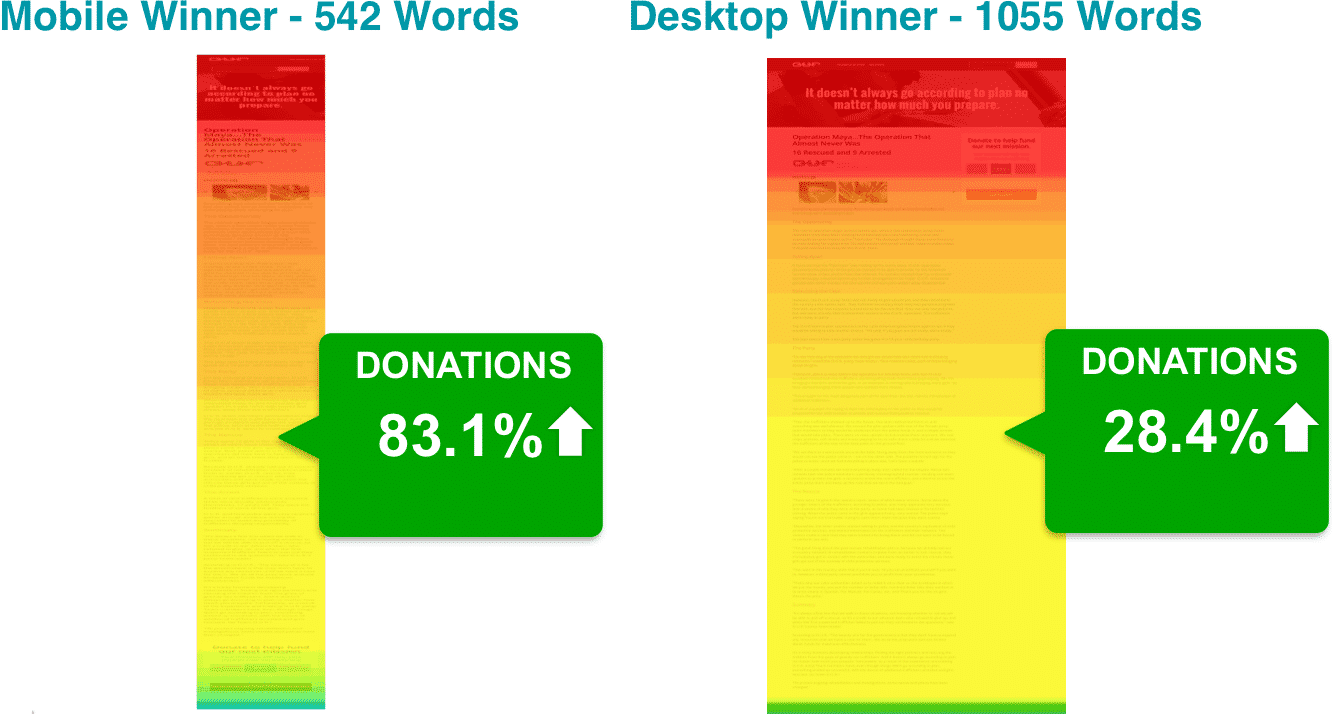
Would you look at that? On mobile, the shortest version of the article produced 83.1% more donations than the longest version of the article. Even on desktop, the medium-length version of the article drove 28.4% more donations than the longer version.
If you look at the heat map and time-on-page data, however, these results are hardly surprising.
On both desktop and mobile, which content length produced the most donations? The one with the best completion rate…not the one with the most content.
Of course, these results are hardly generalizable to your audience. Maybe your readers love epic, 8,000+ word blog posts or landing pages that take days to get through.
But, if you don’t test your content length, how will you know if your content length works for your audience?
Conclusion
Unfortunately, most companies assume that longer content = better results. However, when it comes to delivering results for your business, it’s more important to have the right content length than the longest content possible.
After all, does it really make sense to spend a ton of time and energy creating content that no one reads? Or worse, that makes potential customers bounce before they convert? OURrescue certainly didn’t think so.
Google is beginning to prioritize user experience over content length—do you?
By the way, if you’d like help testing and optimizing your own content length, let me know here or in the comments. I’d love to help!
Have you ever tried testing out different lengths of content on your site? What was your experience? Did you notice any differences in performance on desktop or mobile?





